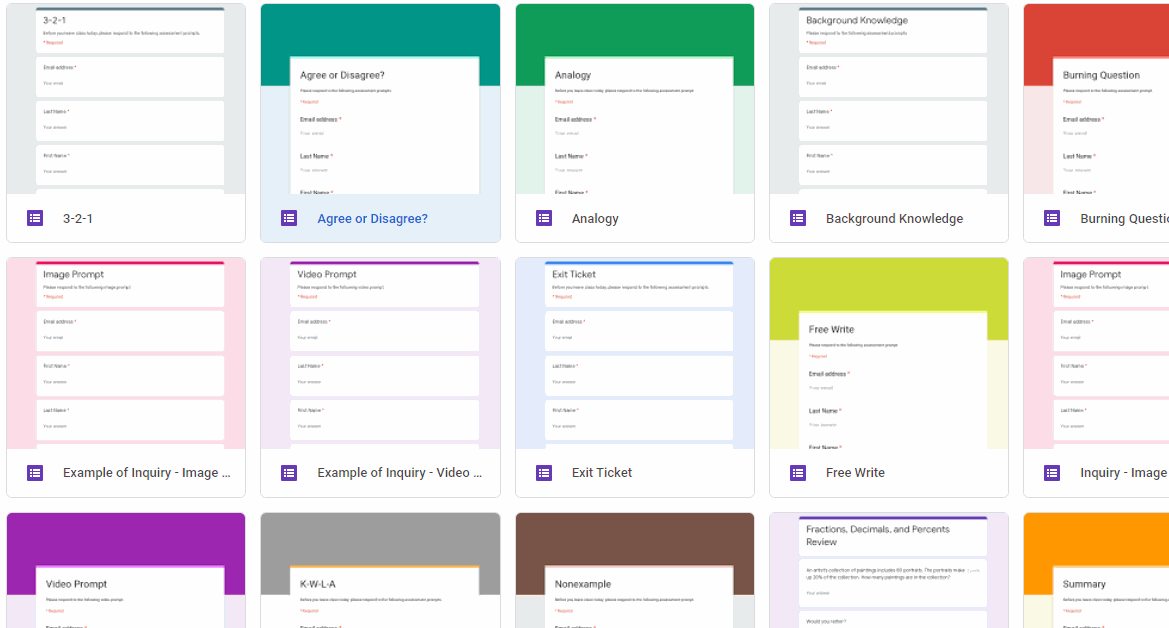From the classroom to the home room (Part 3)
Assessing students is a core part of education. Even in the physical classroom this can be a difficult task, so how do we do this now, in the reality of virtual classrooms? What should assessment look like? Is it even fair to assess students in this new environment?

This week we provide some guidance on this tricky topic, providing insights into:
- Summative vs. Formative Assessments: What are we trying to achieve with our assessments, and which approaches help us reach these goals?
- Tips for assessing students remotely
- Automatically-graded quizzes using Google Classroom
Our lives today are in some ways less connected, and in other ways more connected than they were just a month or so ago. Yet this new state of connected-yet-apart will be how we live and, for those of us who are teachers, work for the foreseeable future. No one knows how long this shaking of the pieces of the educational jigsaw will last, but it’s safe to assume that in education many things will never be the same post-COVID-19.
We’ve touched on this before, but it’s worth looking at some of the fundamental reasons that education takes place, that schools exist, that many people feel compelled to say that even if children aren’t physically in their classrooms, their classrooms should go to them. But to what end?
Like it or not, measuring what has been learned during any period of teaching and learning is an integral part of schooling. The broad term for this is assessment—and if you did a series of “vox pops” (short interviews) on any given street asking adults for an example, many would define it as “taking a test.” Depending on the school setting you’re in, that might be your broad experience as well.
But how does that apply now? If we’re unsure how well students will be engaging with the learning resources we’ve spent a little time preparing, curating, and authoring, how can we get them to take a test at the end with any certainty that it’s a helpful tool to assess what they’ve learned?
There’s no doubt it’s a challenge. If your school and your fellow teachers have rushed to gather a growing collection of learning resources, to what extent do you think there has been serious, considered thought about how, or even if—all of this input, this remote teaching, this assumed learning— might be assessed? It’s entirely likely that the answer to this might be “very little.”
Summing versus forming
There is no doubt that meaningful assessment at a distance is no small challenge. Many of us find it a challenge in person. We’ll go into some of the detail around that a bit later, but first of all, let’s take a broader view of the role of assessment in learning.
A helpful view—and one with which you might already be familiar—is to see assessment as having two main types: summative assessment and formative assessment. At some level, both of these types occur in all classes. A really helpful way to distinguish between the two:
- Summative assessment is assessment of
- Formative assessment is assessment for
Generally, summative assessment sums up what a student has learned at the end of a period of time—a class, a year, a whole period at a school or college. The period of time will be informed by what a teacher wants to find out about the learning that’s taken place. A summative assessment could be a written test, an observation, a conversation, or a task. It summarizes knowledge attainment at a particular point in time for individuals and for a wider group, such as a class or grade/year. It might also be useful for tracking and informing others about progress, for example, parents, school administrators, state boards of education, policymakers, or people funding educational initiatives.
In contrast, formative assessment often takes place on a day-to-day or week-to-week basis in every classroom. It might have some sort of diagnostic assessment—What does this student already know? What knowledge gaps does this student have?—as if both the student and teacher know what has already been achieved. This kind of assessment makes it easier to plan next the steps in learning.
Assessing over distance
All of that theory is very well and good in a classroom setting, but if you’re just finding your feet in teaching at a distance, it’s not relevant, is it? If you’re just coming to grips with putting learning resources out, and getting your students to engage with them is hard enough, what hope do you have of using assessment effectively at this early stage?
However, if you look at things another way, assessment might just be one of the first things you do after getting students used to accessing learning materials online. As we’ve said in previous weeks in this series, this new order in the world of your classroom requires that you:
- Know how students are engaging with what you are providing.
- Know whether the resources you’re giving them are pitched at the right level for their circumstances.
- Have a good understanding of how well they are coping with their home situation.
Having this kind of insight is really important for effective teaching and for ensuring your students’ learning is meaningful and substantial.
Some first steps in assessment
Here are some simple steps you can take to start using assessment at a distance.
Again, the key with each of these examples is to think of the outcomes you’re looking for, both for your students and for you.
If the term formative assessment gets in your way, think of it as INformative assessment because it can be used to inform you about how ready your students are to engage in distance learning, what you might need to focus on in any given topic, and what you might need to go back and cover again or be sure to cover in the next weeks.
Here are some examples of formative/INformative assessment, all of which can be implemented in Google Classroom or any standard learning management system (LMS) or virtual learning environment (VLE).
Here is a video on formative assessment in Google Classroom:
15 Formative Assessments (Google Drive folder)
To use any of these, simply visit the Google Drive folder above and right-click on any of the assessments to make a copy on your own Google Drive, a copy which you can then modify to suit your needs:

How ready are your students to access the learning you’re preparing?
While you might otherwise refer to this sort of activity as a survey, done well in the current world it could be a really powerful formative assessment tool. You can use a survey activity in Google Classroom (actually a Google Form that you create and share with your students) to measure how confident they feel about using the online tools you’re directing them to; how easy it is to access appropriate technology at home; and even how they’re feeling about life in general. It’s important to emphasize that there are no “right” answers in this sort of survey, and that honest answers from them will help you support them better, both in terms of their learning and their emotional well-being, which is a key factor in their ability to engage with studies outside of the classroom.
How much do your students already know about the topic you’re about to cover?
You could approach this sort of assessment in one of two ways or a blend of both. Again, you could use a Google Form to capture students’ confidence on a particular topic, either by asking them to rate themselves on a number of measures, or even by “testing” them on what you know are the key questions. These are the “if they understand this, then they’re most of the way there” questions.
If you want, you can keep the “confidence” questions in a Google Form, and move the “self-test” questions to a Quiz in Classroom—whatever works for you.
Again, if students get the self-test questions wrong, here it’s no big deal—you’re doing this to help them learn better and to ensure that your efforts and time are focused on what they don’t yet know or understand, rather than solely covering knowledge they’ve already mastered.
Automatically graded quizzes
Now, these are summative, end-of-unit assessments, right? Well, in a traditional school setting, they often are. They’re administered under exam conditions, graded rigorously, all with very high stakes attached. However, the automatic grading[1] (some call this self-grading) nature of a quiz created in Google Classroom (or Moodle or any other LMS) lends itself to being a powerful formative assessment tool for several reasons):
- As a teacher you can view results for individuals but also across the whole class, which allows you to see any patterns in wrong answers. If it’s clear that all students are struggling with a foundational piece of knowledge or understanding, that gives you something on which to focus a subsequent piece of teaching.
- Automatically graded quizzes can give instant feedback to the student and, if authored well, that feedback can itself be a powerful tool to support learning.
- It might seem counterintuitive, but in writing a multiple choice question to be used in an automatically graded quiz, it’s critical to write the wrong answers well. These answers can allow you to focus on common misunderstandings around a subject, offer some of those as viable answers, and see if students resist that because they have mastery in this topic.
([1] Some, including Google, call this self-grading, but note that it’s not students actually grading themselves.)
Guides on automatically graded quizzes in Google Classroom:
Give some of these a try this week. See what works for you, and what works for your students.
Remember to keep your objective in mind before trying any of this with your students. Do you just want to test the different platforms? Do you want to (in)formatively assess? Do something more high stakes? Make sure your students understand the purpose of these as well. It’s a high-anxiety time for a lot of us, and we want to support good habits of mind, positive practices, so that we can get into the proper mindset for learning together at a distance.
Source:OER Project Community

